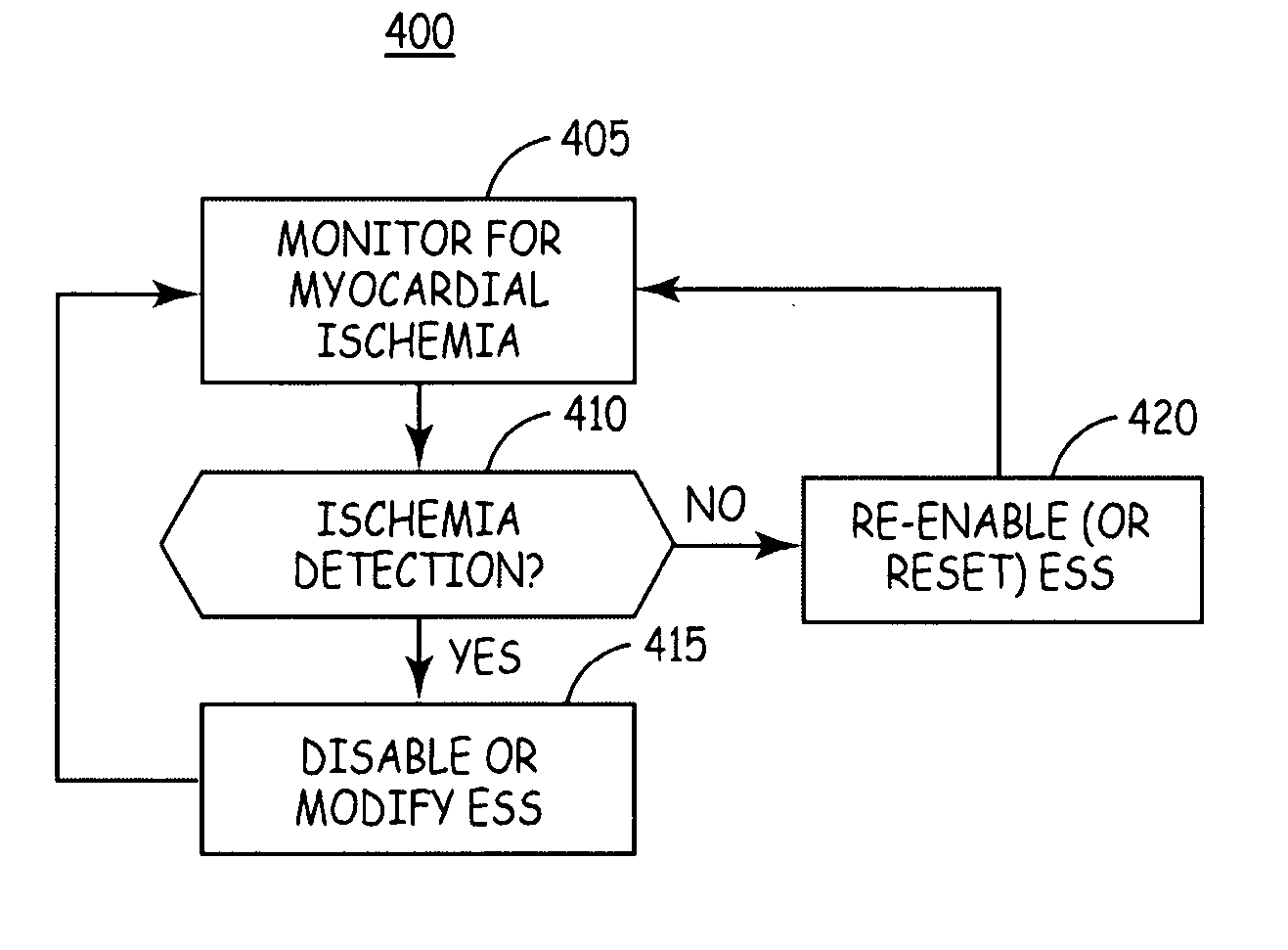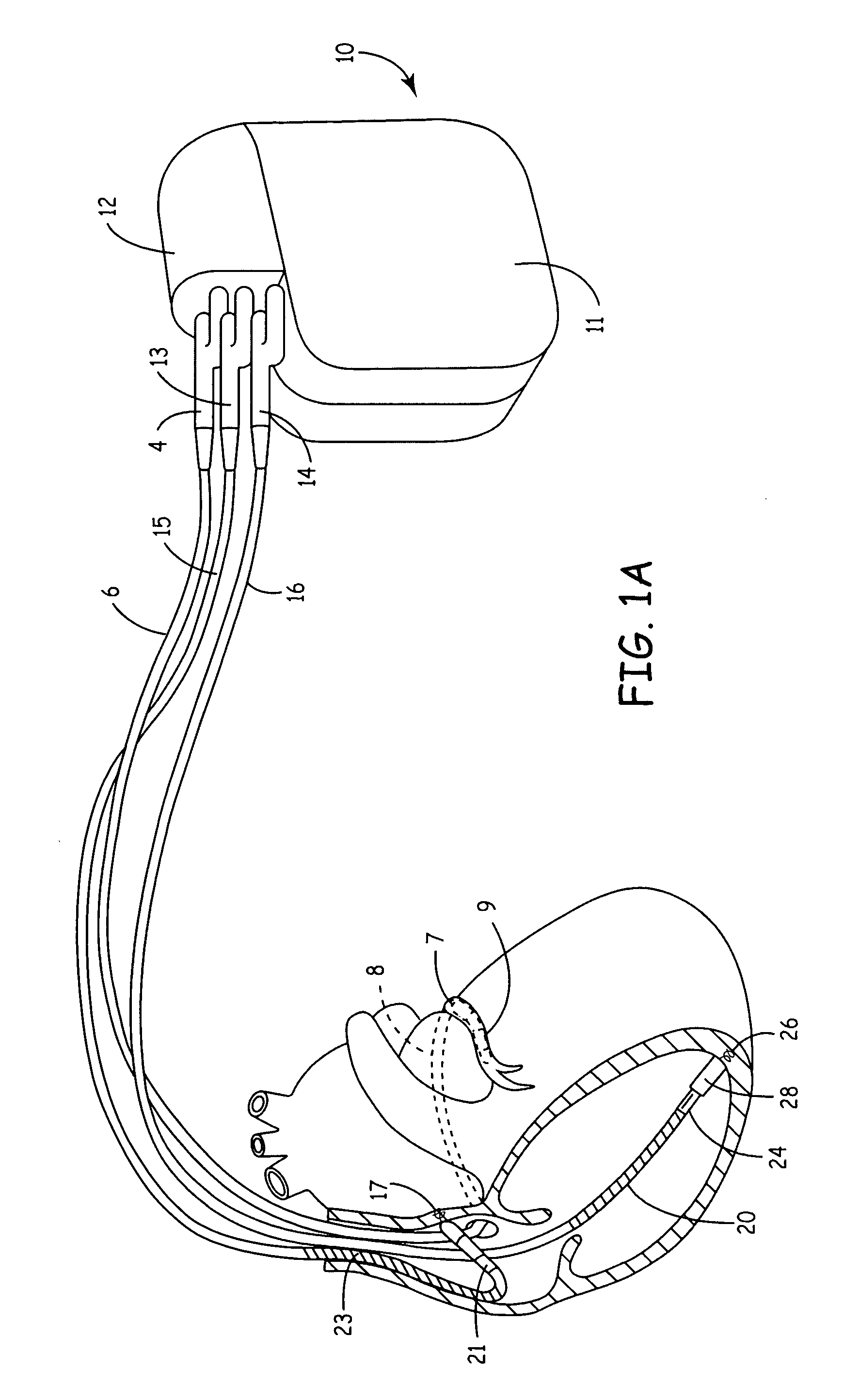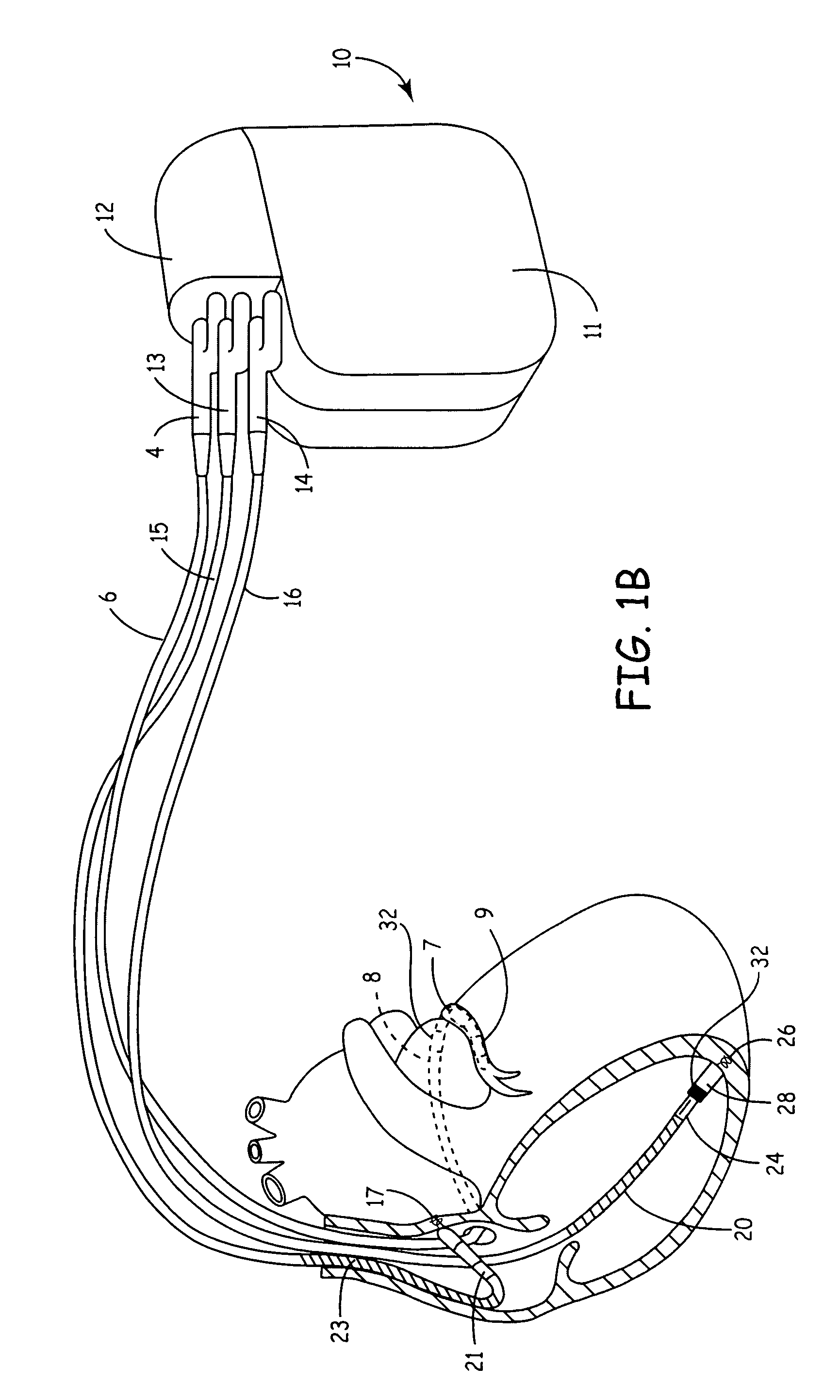Method and apparatus for controlling extra-systolic stimulation (ESS) therapy using ischemia detection
- Summary
- Abstract
- Description
- Claims
- Application Information
AI Technical Summary
Benefits of technology
Problems solved by technology
Method used
Image
Examples
Embodiment Construction
[0021] The present invention is directed toward providing an implantable system for delivering an electrical stimulation therapy to achieve post extra-systolic cardiac augmentation, referred to herein as “extra systolic stimulation” (ESS) therapy, and for detecting myocardial ischemia. ESS therapy delivery is controlled based on the detection of myocardial ischemia, wherein ESS delivery may be suspended, initiated, or otherwise modified when ischemia is detected.
[0022]FIG. 1A is an illustration of an exemplary cardiac stimulation device, referred to herein as an “implantable medical device” or “IMD,” in which the present invention may be implemented. IMD 10 is coupled to a patient's heart by three cardiac leads. IMD 10 is capable of receiving cardiac signals and delivering electrical pulses for cardiac pacing, cardioversion and defibrillation. IMD 10 includes a connector block 12 for receiving the proximal end of a right ventricular lead 16, a right atrial lead 15 and a coronary si...
PUM
 Login to View More
Login to View More Abstract
Description
Claims
Application Information
 Login to View More
Login to View More - R&D
- Intellectual Property
- Life Sciences
- Materials
- Tech Scout
- Unparalleled Data Quality
- Higher Quality Content
- 60% Fewer Hallucinations
Browse by: Latest US Patents, China's latest patents, Technical Efficacy Thesaurus, Application Domain, Technology Topic, Popular Technical Reports.
© 2025 PatSnap. All rights reserved.Legal|Privacy policy|Modern Slavery Act Transparency Statement|Sitemap|About US| Contact US: help@patsnap.com



